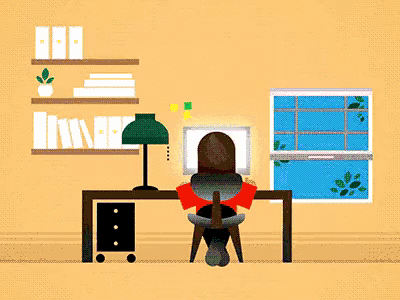Passive House Design Explained: Where Architecture Breathes with Nature
Imagine a home so quiet you can hear your thoughts—and so efficient that your energy bill barely whispers.
That's the potential of Passive House design; an approach that's less about gizmos and more about doing it right in the first place.
In a world of pursuing smart everything—smart cities, smart homes, smart grids—the Passive House quietly stands, simply doing what most buildings can't: working with nature, not against it.
Let's open the design that doesn't just protect life—it supports it.
What Is Passive House Design, really?
Developed in Germany as "Passivhaus" in the 1990s, Passive House is more than a passing fad. It's a demanding, science-driven building code that is extremely energy efficient without compromising on comfort or aesthetics.
Its core? Creating buildings that require minimal or no active heating or cooling.
Envision a house that is warm in winter by sun and body heat alone.
Now envision that same house remaining cool in summer—without AC.
The Philosophy: Build Tight, Vent Right
Passive House design is based on five core principles:
1. Continuous Insulation
Imagine wrapping your building in a warm, seamless blanket. All parts of the building—walls, roof, floors—need to be extremely well-insulated to reduce heat loss.
Story Moment: Imagine an Alpine cabin. Outside is -10°C, but inside is cozy. Not through a booming fire—but because the heat simply has nowhere to go.
2. Airtight Building
Leaks in buildings are like holes in lungs—you can't breathe well. Passive House tries for an extremely airtight building envelope, tested with a blower door test to verify low air leakage.
Architect's Insight: Airtight doesn’t mean stale. It means controlled. The indoor climate becomes predictable, comfortable, and ultra-efficient.
3. High-Performance Windows and Doors
Windows are the eyes of a home—and its biggest energy vulnerabilities. Passive House requires triple-glazed windows with thermally broken frames and careful placement to balance light and heat gain.
Design Tip: South-facing glazing in cold climates is gold. But you’ll need smart shading to avoid summer glare.
4. Heat Recovery Ventilation (HRV/ERV)
With buildings closed up so tightly, new air has to be brought in via a mechanical ventilation system. Such systems capture heat from stale air being expelled and use it to warm fresh incoming air—without combining the two.
Picture this: Breathing clean, pre-warmed air minute by minute throughout the day, as if nature's own HVAC system, but smarter.
5. Thermal Bridge-Free Construction
A thermal bridge is like a hole in your sweater—heat escapes, comfort drops. Passive House design eliminates these weak spots with smart detailing and materials.
Student Challenge: Look for thermal bridges in your studio project—edges, corners, balconies. Solve them, and you’re already thinking like a Passive House designer.
Not Just for Houses
Despite the name, Passive House principles apply to everything:
Schools
Apartment blocks
Offices
Even entire neighbourhood’s
Case in point: Ladakh's Druk White Lotus School, India. Constructed at 11,500 feet, it employs passive design to remain warm despite freezing temperatures with no active heating.
Passive design is a process—it isn't a product.
Why Should Architects Care?
Because the building industry accounts for almost 40% of the world's carbon emissions.
Because climate-resilient architecture isn't a luxury anymore—it's necessary.
Because good design isn't all about form—it's about performance.
Passive House is the roadmap for that future.
"It's not about adding technology to fix bad design. It's about designing so well that you don't need the tech."
— A Passive House mantra worthy of doodling in the margins.
Advantages Beyond Energy Efficiency
Uniform Comfort – No cold or hot spots.
Quiet Living – Triple glazing and insulation result in near-complete acoustic separation.
Healthier Air – Filtered, ventilated air hour by hour, every day.
Longevity – Water-controlled structures equate to less maintenance.
Freedom of Design – You can afford not to compromise on looks. Today's Passive Homes can be sculptural, spare, ornate, or natural.
The Passive Design Process: A Timeline Sketchbook
Begin with climate studies – Learn about your sun, wind, and regional temperatures.
Design the envelope initially – Performance precedes form.
Model, model, model – Utilize PHPP software to calculate performance.
Specify airtightness upfront – Plan with consultants from day one
Reiterate materials – Reduce embodied carbon, increase lifecycle longevity.
Certify (optional but influential) – Certification is not necessary, but it's an excellent standard.
Challenges Architects Encounter
More initial cost (although eventual savings are substantial)
Sloping learning curve for conventional builders
Accuracy in delivery—no tolerance for sloppy connections or lax seals
Design limitations in harsh climates (yet intelligent architecture always adjusts)
But with each obstacle, Passive House presents a deeper way of designing—one that counts more than looks.
Conclusion: Designing for a World That Needs Less
In a time of too much—too much energy, too much garbage, too much din—Passive House is a whisper revolution.
It challenges architects and students to ask themselves: Can you design something that takes more away while taking less away?
It's not about the new tech or shiny shapes. It's about smart restraint, beautiful simplicity, and living in harmony with nature.
For when a building takes its breath from nature, we all breathe a little more easily.




Comments
Post a Comment